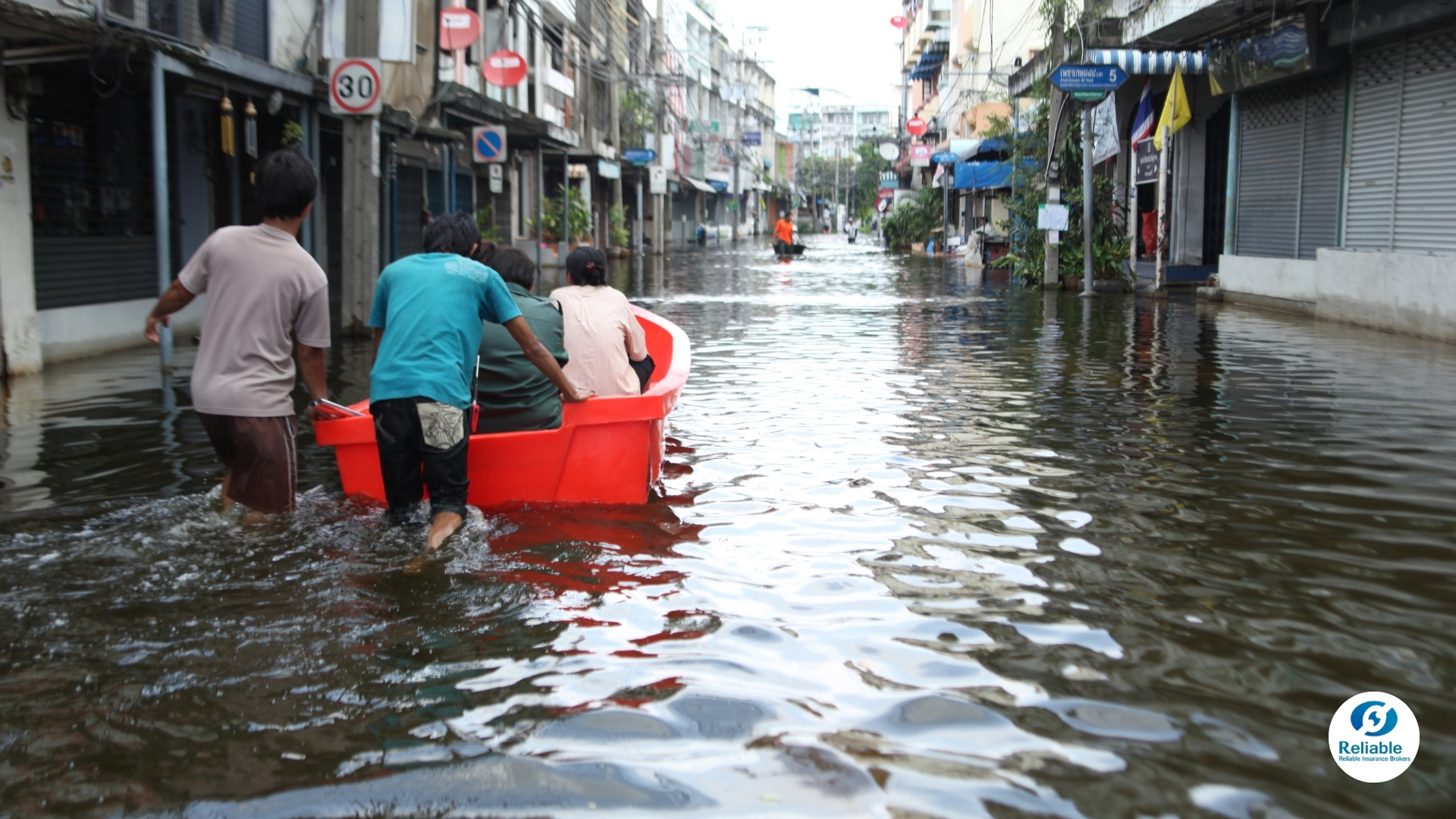Natural disasters can strike without warning, leaving a trail of destruction in their wake. For micro, small, and medium enterprises (MSMEs), the immediate physical damage is often just the beginning. The hidden costs that follow can be just as crippling, affecting everything from supply chains to long-term profitability. In this article, we uncover these hidden costs and explore how MSMEs can build economic resilience and safeguard their future with the right insurance strategies.
Understanding the Hidden Costs of Natural Disasters
Natural disasters bring about not only visible damage but also a series of concealed economic impacts that MSMEs must navigate. These hidden costs can be broadly categorized into direct and indirect expenses:
- Operational Downtime: When a natural disaster hits, business operations can come to a standstill. This downtime results in lost revenue and can disrupt cash flow, affecting the ability to pay bills and employees.
- Supply Chain Disruptions: Disasters often disrupt supply chains, leading to delays and increased costs for sourcing materials. MSMEs, which typically rely on just-in-time inventory systems, are particularly vulnerable.
- Loss of Market Share: Prolonged downtime and supply issues can erode customer trust and loyalty, leading to a loss of market share. Competitors who recover faster may seize the opportunity to attract your customers.
- Long-term Revenue Decline: The impact of a disaster can linger, affecting long-term revenue. Customers may shift to competitors, and the business may struggle to regain its pre-disaster market position.
- Employee Productivity and Well-being: Natural disasters can have a psychological impact on employees, affecting their productivity and overall well-being. The stress and trauma of a disaster can lead to higher absenteeism and lower morale.
The Role of Insurance in Mitigating Economic Impact
Insurance plays a critical role in helping MSMEs navigate the aftermath of natural disasters. By transferring the financial risk to an insurance provider, businesses can mitigate the hidden costs and focus on recovery:
Insurance plays a critical role in helping MSMEs navigate the aftermath of natural disasters. By transferring the financial risk to an insurance provider, businesses can mitigate the hidden costs and focus on recovery:
- Accident and Health Insurance: Protecting the well-being of your employees is essential for maintaining operational continuity and morale during and after a disaster. Accident and health insurance ensures that employees receive the necessary medical care and support, covering medical expenses and loss of income due to injuries sustained during a disaster. Health Maintenance Organization (HMO) plans are included, offering comprehensive health coverage to keep your team healthy and productive.
- Property and Motor Vehicle Insurance: Safeguarding your business's physical assets is crucial for quick recovery after a disaster. Property and motor vehicle insurance provide the financial support needed to repair or replace damaged buildings, equipment, inventory, and vehicles. This includes Commercial All-Risk Property Insurance (CAR), Industrial All-Risk Property Insurance (IAR), and Commercial Motor Vehicle Insurance, ensuring that your operations can resume with minimal downtime and financial loss.
- Operations and Business Continuity Insurance: Ensuring that your business can continue to function during and after a disaster is vital for long-term success. Operations and business continuity insurance, such as Business Interruption Insurance and Engineering Insurance, cover fixed costs like rent and salaries during operational disruptions. Additionally, Engineering Insurance provides coverage for construction projects and machinery affected by natural disasters, which is essential for businesses involved in infrastructure and development.
- Business Liability Insurance: Protecting your business from financial losses due to claims of bodily injury, property damage, negligence, wrongful acts, and cyber-attacks is indispensable. Business liability insurance ensures that your company can handle legal claims and continue operating without significant financial strain, safeguarding you from potential lawsuits and ensuring business continuity. This includes General Liability, Professional Liability, Directors and Officers (D&O) Liability, and Cyber Liability Insurance.
- Logistics Insurance: Maintaining the integrity of your supply chain during and after a disaster is critical for ongoing operations. Logistics insurance, such as Marine Insurance for goods transported by sea and Bonds for various contractual obligations, ensures that your goods are protected during transit and that contractual obligations are met. This coverage is crucial for businesses that rely on maritime logistics and need to ensure performance even in the face of natural disasters.
Current Trends in MSME Insurance Uptake
MSMEs are increasingly recognizing the importance of insurance in disaster resilience. Recent trends show a growing uptake of various insurance products tailored to the unique needs of small businesses. By staying informed about these trends, MSMEs can better navigate the insurance landscape and choose the best coverage options to protect their businesses from the hidden costs of natural disasters. These trends include:
- Increased Awareness and Adoption: More MSMEs are becoming aware of the financial risks posed by natural disasters and are proactively seeking insurance solutions to mitigate these risks.
- Customized Insurance Plans: Insurance providers are offering more customizable plans that cater specifically to the unique needs of MSMEs. This ensures that businesses only pay for the coverage they need, making insurance more accessible and affordable.
- Focus on Comprehensive Coverage: MSMEs are prioritizing comprehensive insurance coverage that includes accident and health, property and motor vehicle, operations and business continuity, business liability, and logistics insurance. This holistic approach ensures that all aspects of the business are protected.
- Integration of Technology: Technology is playing a key role in enhancing the insurance experience for MSMEs. From digital platforms that simplify the insurance purchasing process to advanced analytics that help businesses assess risk and determine the best coverage options, technology is making insurance more efficient and user-friendly.
- Government Support: Many governments are introducing policies and subsidies to encourage MSMEs to invest in insurance and disaster preparedness. This support helps make insurance more affordable and accessible, enabling more businesses to protect themselves against the financial impacts of natural disasters.
By staying informed about these trends, MSMEs can better navigate the insurance landscape and choose the best coverage options to protect their businesses from the hidden costs of natural disasters.
Practical Steps for Building Economic Resilience
By taking these practical steps, MSMEs can build economic resilience, ensuring they are better prepared to face the hidden costs of natural disasters and can recover more swiftly. Proactive measures, comprehensive insurance, and community engagement are key to safeguarding your business’s future.
- Risk Assessment and Planning: Conduct a thorough risk assessment to identify potential vulnerabilities. Develop a comprehensive disaster recovery plan that includes insurance coverage.
- Invest in Comprehensive Insurance: Work with a reliable insurance broker to ensure your business is adequately covered. Consider the unique risks your business faces and choose policies that provide the best protection.
- Employee Training and Support: Train employees on disaster preparedness and response. Provide support systems to help them cope with the psychological impact of disasters.
- Leverage Technology: Use technology to enhance disaster preparedness and recovery. This includes cloud-based data backup, remote work solutions, and communication tools.
- Engage with Community Initiatives: Participate in community disaster preparedness programs and collaborate with local businesses and authorities to strengthen overall resilience.
The hidden costs of natural disasters can have a profound impact on MSMEs, affecting everything from operations to long-term profitability. By understanding these hidden costs and investing in comprehensive insurance, MSMEs can build economic resilience and safeguard their future. It's essential for businesses to take proactive steps in disaster preparedness and recovery planning to minimize financial risks and ensure sustained growth.
Protect your business from the unforeseen costs of natural disasters. Contact Reliable Insurance Brokers today to discuss how our tailored insurance solutions can help you build resilience and ensure your business's future.
Sources:
- National Disaster Risk Reduction and Management Council (NDRRMC). (2022). "Natural Disasters and Business Resilience."
- Insurance Information Institute. (2023). "The Role of Insurance in Disaster Recovery."
- World Bank. (2021). "Economic Impacts of Natural Disasters on Small and Medium Enterprises."




